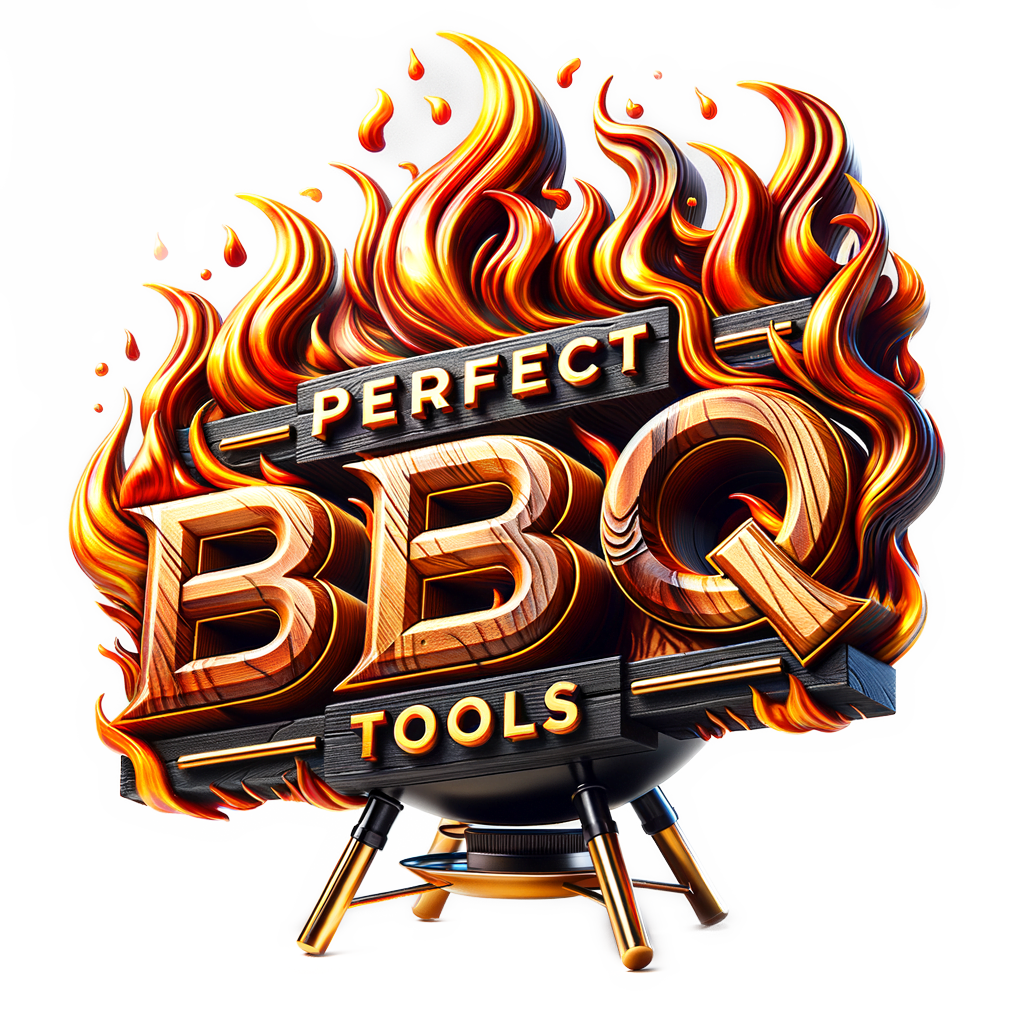Have you ever wondered about the purpose of those small, adjustable openings on your barbeque grill? You might have seen them but never paid much attention to them. Well, prepare to be enlightened! The air vents on a barbeque grill serve a crucial function in regulating the temperature and airflow during the grilling process. They allow you to control the heat, which in turn determines how your food cooks, ensuring a delicious and perfectly cooked meal every time. So next time you fire up the grill, remember to adjust those air vents to achieve the utmost grilling perfection!
Understanding the basics of a barbeque grill
Defining what a barbeque grill is
A barbeque grill is a cooking appliance that is specifically designed for grilling and barbequing food. It consists of a cooking surface, commonly made of metal grates, which is heated by a fuel source to cook the food. Grills come in a variety of shapes and sizes, ranging from portable gas grills to larger charcoal grills. These versatile cooking appliances are commonly used for outdoor cooking, providing a unique smoky flavor to the food.
Exploring different types of barbeque grills
When it comes to barbeque grills, there are several options available in the market. The two most popular types of grills are gas grills and charcoal grills.
Gas grills are powered by propane or natural gas and offer convenience and ease of use. They provide precise temperature control with adjustable burners, making it easier to cook a wide range of foods. Additionally, gas grills heat up quickly, reducing the waiting time before you can start grilling.
On the other hand, charcoal grills are fueled by charcoal briquettes or lump charcoal. These grills are known for their smoky flavor and intense heat, which can help achieve that perfect sear on your steaks or burgers. Charcoal grills require some time to heat up and may need more effort in terms of cleaning and disposing of ash, but many grilling enthusiasts swear by the unique taste that charcoal imparts to the food.
Components of a typical barbeque grill
While the exact design of barbeque grills may vary, there are some common components that you can find in most grills. These include:
Cooking Surface: The cooking surface of a grill is where the food is placed for grilling. It is typically made of metal grates that allow the heat to penetrate the food while creating those characteristic grill marks.
Fuel Source: The fuel source provides the heat necessary for grilling. It can be either gas or charcoal, depending on the type of grill.
Heat Source: The heat source, such as burners or charcoal briquettes, generates the heat that cooks the food. Gas grills have built-in burners that can be controlled, while charcoal grills rely on the combustion of charcoal to produce heat.
Lid or Cover: The lid or cover is an essential component of a grill as it helps to trap heat and smoke, creating a more even cooking environment. It also protects the food from direct exposure to flames and allows for indirect grilling.
Grill Body: The grill body is the main structure that houses the cooking surface, fuel source, and heat source. It is typically made of metal, such as stainless steel or cast iron, to withstand high temperatures and outdoor conditions.
Air Vents: Air vents play a crucial role in temperature control and moisture management during grilling. These openings allow for airflow, which influences the intensity of the fire and the overall cooking process.
Defining air vents and their importance
Definition of air vents
Air vents, also known as dampers or vents, are adjustable openings on a barbeque grill that allow for the regulation of airflow. They are usually located on the lid or body of the grill and can be opened or closed to control the amount of oxygen that reaches the fuel source.
Locating the air vents on a grill
To locate the air vents on your grill, look for small openings along the sides or at the bottom of the grill’s body or lid. These openings may be equipped with adjustable dampers that can be opened or closed to control the airflow.
Structural design of barbecue grill air vents
Barbeque grill air vents are typically designed to be adjustable to allow for precise control of airflow. They are often made of metal, such as stainless steel, and come in various shapes and sizes. The most common types of air vents found on grills are bottom vents and top vents.
Bottom vents are located near the base of the grill and are responsible for supplying oxygen to the fuel source. They can be opened or closed to regulate the intensity of the fire. Top vents, also known as chimney vents or exhaust vents, are located on the lid of the grill and are primarily responsible for the escape of smoke and excess heat. These vents can also be adjusted to control the temperature inside the grill.

Role of air vents in temperature control
Explanation of the heat principle
To understand the role of air vents in temperature control, it is important to grasp the basic principle of heat transfer during grilling. Heat is transferred from the fuel source to the cooking surface through conduction, convection, and radiation. Conduction refers to the direct transfer of heat when the food comes into contact with the hot cooking surface. Convection involves the movement of heat through air or liquid, while radiation refers to the transfer of heat through electromagnetic waves.
How air vents facilitate temperature regulation
Air vents play a vital role in regulating the temperature inside the grill. By adjusting the vents, you can control the amount of oxygen that reaches the fuel source, thereby influencing the combustion process. Opening the vents allows for increased oxygen supply, resulting in a more intense fire and higher temperatures. Conversely, closing the vents restricts the airflow, reducing the oxygen supply and subsequently lowering the grill’s temperature.
Comparison of cooking with open and closed vents
Cooking with open or closed vents can have a significant impact on your grilling experience. When grilling with open vents, more oxygen is supplied to the fuel, resulting in a hotter fire and faster cooking times. This technique is commonly used for searing steaks or achieving a crispy outer layer on foods. On the other hand, cooking with closed vents slows down the combustion process, creating a more indirect cooking environment ideal for low and slow cooking methods like smoking.
Air vents and oxygen supply
How air vents aid in oxygen supply to the grill
Air vents are directly responsible for supplying oxygen to the fuel source in a barbeque grill. Oxygen is a crucial component for the combustion process, as it supports the chemical reaction that converts fuel into heat and light. By adjusting the air vents, you can control the amount of oxygen that reaches the fuel, consequently regulating the intensity of the fire.
The correlation between oxygen and fire
Oxygen is essential for the combustion of fuel and the sustenance of a fire. Without an adequate supply of oxygen, the fire will not be able to burn efficiently. The air vents on a grill provide a means of regulating the oxygen supply, ensuring that the fire remains lit and consistent throughout the cooking process.
Effects of inadequate oxygen supply during grilling
Insufficient oxygen supply can have detrimental effects on the grilling process. If the air vents are closed or restricted, the fire may become starved of oxygen, leading to a decrease in temperature or even extinguishing the flames. This can result in unevenly cooked food and prolonged cooking times. It is important to maintain proper airflow through the air vents to ensure optimal grilling conditions.

Smoke management and air vents
How smoke is created during grilling
Smoke is an integral part of the grilling experience, contributing to the distinct flavor and aroma of grilled food. Smoke is created when organic compounds in the food, such as fats and juices, come into contact with the heat source and undergo pyrolysis, a chemical reaction that breaks down the compounds and releases smoke.
Role of air vents in smoke escape
Air vents play a key role in managing the escape of smoke during grilling. By adjusting the top vents, you can control the release of smoke from the grill. Opening the vents allows for greater smoke escape, reducing the chances of the food becoming excessively smoky. On the other hand, closing the vents can help retain more smoke, imparting a stronger smoky flavor to the food.
Benefits of proper smoke management for grilling quality
Proper smoke management is crucial for achieving optimal grilling results. By controlling the release of smoke through the air vents, you can strike a balance between imparting a desirable smoky flavor to the food and avoiding an overpowering or bitter taste. Different types of foods may require varying levels of smoke exposure, and proper smoke management allows for customization to suit individual preferences.
Influence of air vents on fuel efficiency
Role of air vents in fuel consumption
Air vents directly impact the efficiency of fuel consumption in a barbeque grill. By adjusting the vents, you can control the oxygen supply, which in turn affects the intensity and duration of the fire. Properly managing the airflow through the vents can help maximize fuel efficiency, ensuring that the fuel lasts longer and reduces the need for frequent refueling.
Effects of different vent adjustments on fuel usage
The adjustments made to the air vents can have a direct impact on the rate at which fuel is consumed. Opening the vents wide allows for increased oxygen supply, resulting in a more intense fire that burns through fuel more quickly. Conversely, closing the vents restricts the oxygen supply and slows down the combustion process, leading to a longer burn time and reduced fuel consumption.
Strategies to optimize fuel use through vent management
To optimize fuel use, it is important to strike a balance between oxygen supply and fuel consumption. Start by opening the vents wider to achieve the desired temperature and sear on the food. Once the desired temperature is reached, gradually adjust the vents to a partially open position to maintain a stable temperature while conserving fuel. Experimenting with different vent positions and monitoring the temperature will help you find the right balance for fuel efficiency.

Air vents and moisture control during grilling
Creating moisture during the grilling process
The grilling process inherently involves moisture loss from the food due to the intense heat. However, there are ways to create and retain moisture to ensure juicy and flavorful results. Marinating the food before grilling, basting with sauces or marinades during cooking, and using water pans or steam can all help in retaining moisture.
Function of air vents in moisture escape
Air vents play a role in moisture management during grilling by allowing the escape of excess moisture. By leaving the vents partially open, you can facilitate the release of steam and excess moisture from the grill, preventing the food from becoming excessively moist or soggy. This is particularly important when grilling foods that release a significant amount of moisture, such as vegetables or fatty meats.
Balancing moisture content for optimal grilling
Achieving the right balance of moisture is essential for optimal grilling results. While it is important to retain moisture to ensure juicy and tender food, excessive moisture can lead to steaming instead of grilling and can hinder the development of a crispy exterior. By using the air vents to regulate the release of moisture, you can strike a balance and achieve the desired texture and flavor in your grilled dishes.
Safety considerations involving air vents
Dangers of improper ventilation during grilling
Proper ventilation is crucial for ensuring a safe grilling experience. Inadequate ventilation can lead to the buildup of carbon monoxide, a colorless and odorless gas that can be lethal when inhaled in high concentrations. A poorly ventilated grill can also increase the risk of flare-ups and improper combustion, posing a fire hazard.
Safety measures related to air vents
To ensure safety during grilling, it is important to follow certain safety measures related to air vents. These include:
- Ensure proper ventilation by keeping the air vents open during the entire grilling process.
- Regularly clean the air vents to prevent blockages that can impede airflow.
- Keep the grill at a safe distance from flammable materials and ensure it is placed on a stable surface.
- Never leave the grill unattended, especially when the vents are open or fuel is burning.
- Familiarize yourself with the manufacturer’s instructions and safety guidelines specific to your grill model.
Case studies on grill-related accidents due to poor ventilation
While grilling accidents due to poor ventilation are relatively uncommon, it is crucial to be aware of the potential dangers. Some documented cases involve carbon monoxide poisoning resulting from grilling in enclosed spaces with inadequate ventilation. These accidents serve as a reminder of the importance of ventilating the grilling area properly and being aware of the potential risks.
Maintenance and care for grill air vents
Importance of regular cleaning of air vents
Regular cleaning of air vents is essential for maintaining optimal performance and safety of your barbeque grill. Over time, the vents can accumulate grease, ash, and other debris, resulting in blockages that hinder airflow. Cleaning the vents ensures proper ventilation and reduces the risk of flare-ups or decreased grill efficiency.
Effective methods and products for cleaning vents
Cleaning the air vents can be done using simple household items and cleaning solutions. Start by removing the grates and brushing away any loose debris. For metal vents, use a grill brush or a stiff bristle brush to scrub away grease and ash. For stubborn buildup, a mixture of warm water and mild dish soap can be used. After cleaning, rinse the vents thoroughly and allow them to dry before reattaching them to the grill.
Warning signs of dysfunctional vents due to poor maintenance
If the air vents are not properly maintained, various warning signs may indicate dysfunction or blockage. These signs include:
- Difficulty in achieving and maintaining desired temperatures.
- Uneven cooking or hot spots on the grill surface.
- Excessive smoke or lack of smoke escape.
- Flare-ups or irregular flames during the cooking process.
If any of these signs are observed, it is important to inspect and clean the air vents to ensure proper functionality.
Air vents and the art of grilling
Specific usage of air vents for different grilling recipes
The proper usage of air vents can greatly enhance your grilling skills and allow for versatility in cooking different recipes. For high-heat grilling, such as searing steaks, opening the vents wide will create a hotter fire and more intense heat. For slow cooking or smoking, partially closing the vents will help maintain lower temperatures and create a more indirect cooking environment.
Influence of air vents on food taste and texture
Air vents significantly influence the taste and texture of grilled food. Cooking with open vents allows for greater exposure to heat and direct flame, resulting in a caramelized exterior and intense flavors. Closed vents, on the other hand, create a more gentle and indirect cooking environment, imparting a more subtle flavor profile and tender texture. The proper use of air vents allows for customization to achieve the desired taste and texture.
Professional grilling techniques involving air vents
Professional chefs and grilling enthusiasts often employ advanced techniques to elevate their grilling prowess. One such technique involves using the air vents to create different zones of heat on the grill surface. By opening the vents on one side and partially closing them on the other, you can create a two-zone grilling setup, allowing for simultaneous direct and indirect cooking. This technique is particularly useful for searing large cuts of meat while achieving a perfectly cooked interior.
In conclusion, understanding the basics of a barbeque grill, including the function of air vents, is essential for mastering the art of grilling. Air vents play a crucial role in temperature control, oxygen supply, smoke management, fuel efficiency, moisture control, and overall safety. By learning to manipulate the air vents effectively, you can achieve optimal grilling results and create delicious, flavorful meals. Regular maintenance and care of the air vents ensure their proper functionality and longevity. So, fire up your grill, adjust those air vents, and get ready to enjoy the ultimate grilling experience!

